
|
|
|
|
Jaguar E-Type Timeline, Part II
|
|
|
|
Left: pre 1968 covered Series 1 headlights featured a gasket seal, although water still leaked in and the condensation affected lighting performance. In the middle is a 1968 "Series 1.5" headlight. Note the position of the turn signal light above the bumper. Right: A Series 2 (1969 and later) headlight with a larger turn signal light positioned below the bumber. Note that the Series 2 headlight sugar scoop (as the opening is sometimes called) is a slightly different shape. Also, and not apparent from these photos, the Series 2 opening is aimed differently which improved headlight performance. The open headlight design has the advantage of greater lighting power. However, many enthusiasts feel that the E-Type's styling lost something with the new design.
|
|
|
|
1968 was the year for the Series 1 1/2 cars. The Series 1 1/2 designation was popularly adopted; the factory never recognized the term and regarded 1968 E-Types as Series 1, an easily confused fact due to the appearance differences. This area is sometimes debated with some claiming that "Series 1, open headlight variant" as the official designation. It is a confusing year for the E-type with a lot of turmoil brought about by safety and anti-pollution regulations of the US government. Some manufacturers (Austin Healey, for example) chose to give up in the face of the requirements. Many of the changes occurred at various times in the production year, a source of headaches for concours judges and restoration shops. The most significant exterior styling change was in the headlights, where the glass covers were replaced with an open design. Further confusing the issue is that there were a number of open headlight cars for the 1967 model year; they are regarded as Series 1 cars despite their appearance.
The engine was modified to meet emissions requirements and here the news was not good. The displacement remained the same, but in the USA the triple SU carburetors were replaced by a pair of Zenith-Stromberg units. Horsepower was reduced from 265 to 246 hp; torque went from 283 to 263 lb.-ft. 2,105 E-Types were sold; 914 roadsters, 554 coupes and 637 2+2 coupes.
|
|
|
|
The interior switchgear on the E-type was both a design tour de force and an ergonomic nightmare. The Series 1 switch and instrument panel (left) was a visual delight with its perfect symmetry. On top (left to right) were the ammeter, fuel gauge, the rotary light switch, oil pressure and the water temperature gauges. The toggle switches were [windshield] washer, fast/slow wiper, map [light], starter [button], cigar lighter, ignition, fast/slow fan, bright/dim panel and interior. It all looked good, but the illogical layout was confusing to use. The design did make things easier on the production line when it came to producing both right hand and left hand drive cars.
Rocker switches (right) were used in 1968 and later E-Types to comply with the new US safety regulations. The ammeter was replaced by a voltmeter and a clock, formerly part of the tachometer, was in the center.
|
|
|
|
More regulations brought more changes to the E-type. The front turn signal lights and the tail lights increased in size and moved from above to below the bumper. Side marker lights were incorporated. The seats were fitted with headrests. The price was approximately $5,858, or about $1,000 more than a well optioned Corvette. 6,847 E-Types were sold; 3,477 roadsters, 1,937 coupes and 1,433 2+2 coupes.
|
|
|
|
1970 was the last year that the Series II was sold in significant quantity. 6,847 E-Types were sold; 3,477 roadsters, 1,937 coupes, 1433 2+2 coupes and six Series III 2+2 coupes.
|
|
|
|
1971 was the first year for the Series III E-type, featuring the V12 engine. Both the roadster and coupe were built on the 2+2 platform, so all coupes were 2+2s. An automatic transmission was available on the roadster for the first time. 3,743 E-Types were sold; 20 Series II roadsters, 16 Series II coupes, 313 Series III roadsters and 3,394 Series III 2+2 coupes.
|
|
|
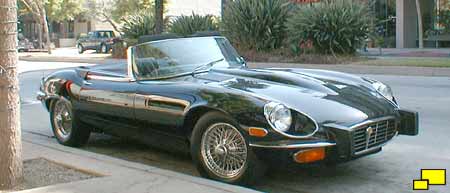
|
|
|
|
Series III E-type. They are easily distinquished by the grill in the larger radiator opening and the flared wheel arches. The huge bumper overriders identify this as a late 1974 model.
|
|
|
|
|
|
3,967 E-Types were sold; 1,676 roadsters and 2,291 2+2 coupes.
|
|
|
|
Front bumper overriders were fitted. A midyear change saw the four outlet exhaust reduced to two. 4,735 E-Types were sold; 3,128 roadsters and 1,607 2+2 coupes.
|
|
|
|
Larger bumper overriders were installed on E-Types made after January 1974. The last year the E-type was available in quantity. 2,862 E-Types were sold; all were roadsters.
|
|
|
|
The last year for the E-type. The remaining 50 were made on a separate production line; all were black and equipped with a special plaque on the glovebox door. The last one built is chassis number IS 2872, and is owned by Jaguar. Six E-Types were made; all were roadsters.
Production figures source: "Original Jaguar E-Type" by Philip Porter.
|
Jaguar E-Type Forum
Contact other enthusiasts with Jaguar E-Type questions, comments and advice!
Click here to visit the WebCars! Jaguar E-Type Forum.
|
|
|
Note: Clicking on an image with this symbol (  ) will lead to a larger image.
(A new window will open in your browser) |

Suggestions? Comments? Tell us!!!
|

|
|

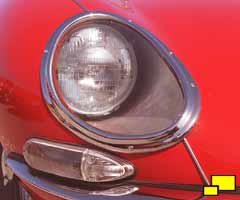
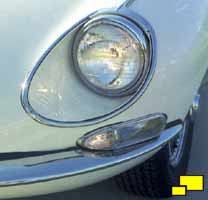
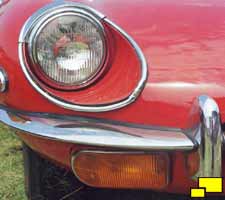
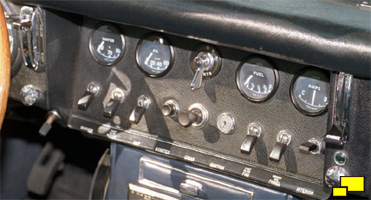
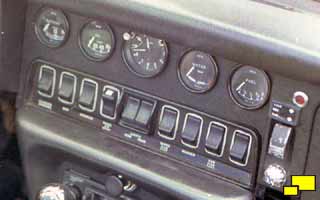

 ) will lead to a larger image.
) will lead to a larger image.

